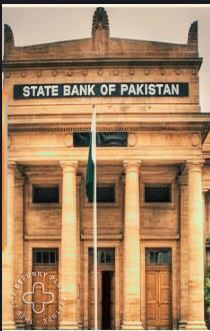Banking Rich History and 2 major types of Bank Accounts
Banking Rich History and 2 major types of Bank Accounts opened now have gone through a revolution, lets have a look on it step by step.
Birth of Banking leading to Bank Accounts opening
Early traces of banking can be found in ancient Mesopotamia, around 2000 BCE, where the first known form of lending took place, before the evolution of proper bank accounts opening.
Temples were often considered the earliest banks, served as repositories for valuable items and grain, and priests would lend these resources to local farmers and merchants.
The temples were also responsible for keeping records of these transactions, giving birth to the concept of bookkeeping as at those times there was no proper bank accounts.
In ancient Greece, the concept of banking further evolved with the establishment of moneylenders and private depositories. Around 600 BCE, the Greek city-state of Athens introduced the first standardized coinage system, which facilitated trade and contributed to the growth of banking activities.
The Romans, too, played a significant role in the development of banking. They established a network of banks throughout their empire and introduced financial innovations such as bills of exchange, which allowed for the transfer of funds between different locations.
Medieval and Renaissance Europe Leading to Bank Accounts opening
After the fall of the Roman Empire in the 5th century which led to a decline in banking activities, but they re-emerged in medieval Europe during the 12th and 13th centuries.
The Knights Templar, a religious military order, provided secure storage for valuables and facilitated the transfer of funds for pilgrims traveling to the Holy Land. Their financial network laid the groundwork for modern banking practices.
The Italian city-states of Florence, Venice, and Genoa emerged as major banking centers in the 14th and 15th centuries. The Medici family of Florence, who established the Medici Bank, was instrumental in popularizing the double-entry bookkeeping system, which remains a cornerstone of accounting practices today.
central banks, such as the Bank of England (1694) and the Sveriges Riksbank (1668).
The birth of modern banking is often attributed to the founding of the Bank of Amsterdam in 1609. It functioned as a central bank, stabilizing the value of the local currency and serving as a model for other
The Expansion of Banking and Advancement in Bank Accounts Opening
17th and 18th centuries saw the growth of banking in Europe, through the establishment of banking dynasties such as the Rothschilds and Barings. Joint-stock banks, which allowed investors to buy shares and participate in profits, also began to emerge during this period.
Creation of state-chartered banks and the establishment of the Federal Reserve System in 1913, which Banking further expanded to the New World with the founding of the Bank of New York in 1784 and the First Bank of the United States in 1791.
American banking further developed in the 19th century with the aimed to maintain financial stability and serve as the central banking authority in the United States which leads bank accounts opening .
Technology and the Evolution of Banking for Account Opening
The 19th and 20th centuries saw rapid technological advancements that significantly impacted the banking industry. The introduction of the telegraph in the 1840s enabled faster communication between banks, while the invention of the telephone in the 1870s further revolutionized communication and allowed for the creation of the first wire transfers.
Development of new technologies, such as ATMs, electronic payments, and online banking, revolutionized the banking industry in the latter half of the 20th century. These innovations made banking more convenient and accessible to consumers, while also improving efficiency and reducing costs for banks, now customers can also bank accounts digitally also by just sitting at home.
The globalization of the banking industry in the late 20th century also brought about significant changes, as banks expanded their reach beyond national borders and began to offer new services such as international payments and currency exchange.
Today, we have digital currencies, something bankers of ancient times probably would not have been able to comprehend.
Banking Rich History and 2 major types of Bank Accounts ?
There are two type of bank Accounts which have further bifurcation as per banks discretion and product features tailored to target specific market customer’s.
- Current Bank Account’s.
- Saving Account’s.
As a customer you need to consider the type of features you need and what you’re willing to pay for a checking account/Saving Account.
Here is a checklist or key features you should consider as you compare accounts of any bank you want to open your bank account;-
- Minimum deposit requirements
- Minimum balance requirements
- Monthly maintenance fees
- Other banking fees, such as overdraft or ATM fees
- ATM network size and locations
- Added features or discounts, such as rewards on purchases or fee or free online transfer’s etc







